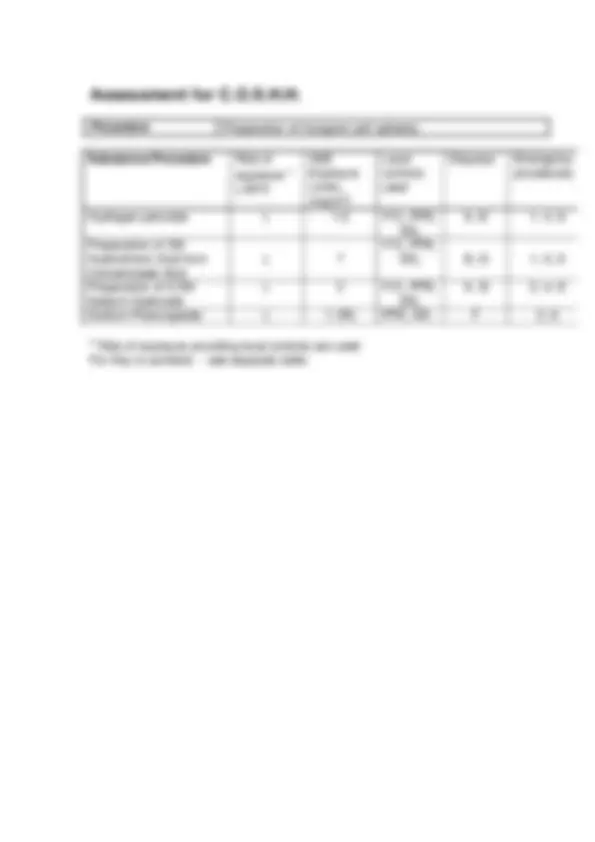



Study with the several resources on Docsity

Earn points by helping other students or get them with a premium plan


Prepare for your exams
Study with the several resources on Docsity

Earn points to download
Earn points by helping other students or get them with a premium plan
Community
Ask the community for help and clear up your study doubts
Discover the best universities in your country according to Docsity users
Free resources
Download our free guides on studying techniques, anxiety management strategies, and thesis advice from Docsity tutors
Laboratory Risk Assessment. Procedure. Preparation of Inorganic ash spheres. Level of Risk medium. Hazard. Risk. Recommended Control. Hydrogen peroxide -.
Typology: Study notes
1 / 3

This page cannot be seen from the preview
Don't miss anything!


Procedure (^) Preparation of Inorganic ash spheres
Level of Risk medium
Hazard Risk Recommended Control
Hydrogen peroxide - oxidising agent
Personal injury - chemical burns, eye injury,
?? Lab coat, safety glasses and gloves must be worn at all times. ?? Hydrogen peroxide must be used in the fume cupboard with the window pulled down to the safe working height as indicated Hydrogen peroxide - oxidising agent
explosion/fire (^) ?? Spills on bench tops, floors etc. should be diluted with water before mopping up. Mopping up concentrated hydrogen peroxide with paper towel can cause fires. ?? Samples with high organic content should be treated with cold peroxide first and left to stand for a short time prior to heating Unbalanced centrifuge Damage to centrifuge rotor and risk of personal injury
?? Ensure that the sample buckets positioned opposite each other on the rotor weigh the same.
The centrifuge does have a light to indicate whether it is properly balanced, but this will only come on once the speed of the rotor has reached 1000 rpm and this is often too late to prevent damage.
Preparation of 0.3M Sodium Hydroxide Solution
Personal injury - chemical burns, eye injury
?? Lab coat, safety glasses and gloves must be worn at all times Preparation of 0.3M Sodium Hydroxide Solution - Heat generated by dissolution of NaOH
Personal injury - burns, flawed glassware may crack
?? Ensure glassware is free from cracks or flaws. ?? Cool the exterior of the flask in a bowl of cold water ?? Do not handle the base of the flask until it has cooled Preparation of 3M Hydrochloric Acid from Concentrated Acid
Personal injury - chemical burns, eye injury
?? Lab coat, safety glasses and gloves must be worn at all times ?? Conc. HCl must be used in the fume cupboard with the window pulled down to the safe working height as indicated ?? Always add acid to water. Use of 3M HCl Personal injury - chemical burns, eye injury, burns from hotplate.
?? Lab coat, safety glasses and gloves must be worn at all times ?? Allow beakers to cool before removing from the hotplate ?? Clear up any spillages immediately according to COSHH guidelines.